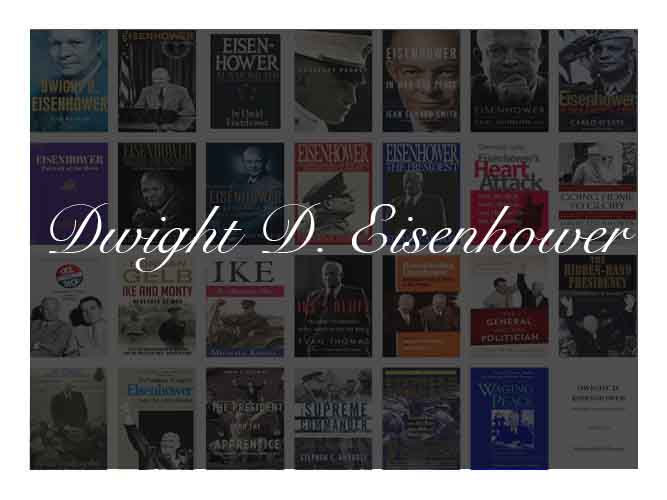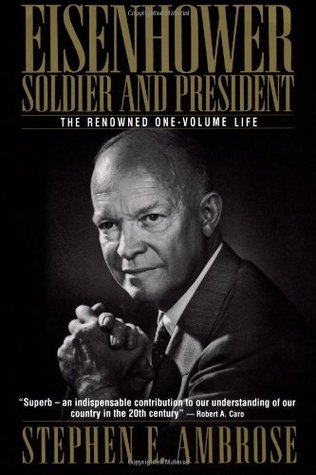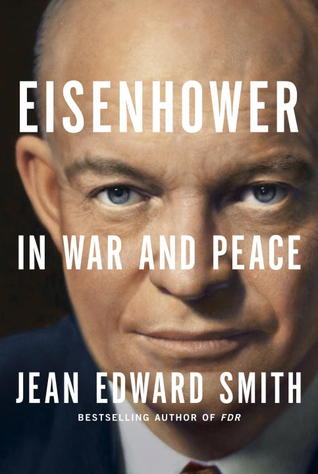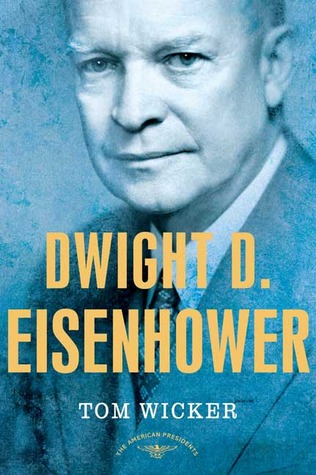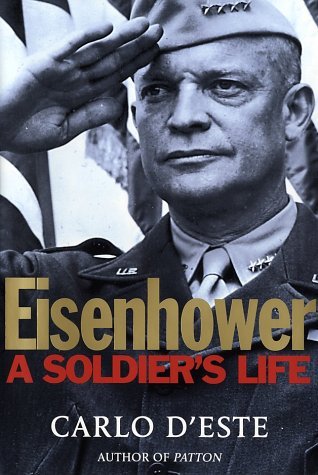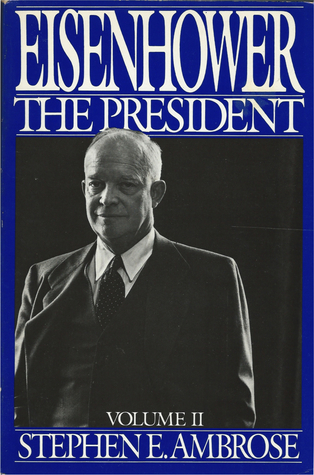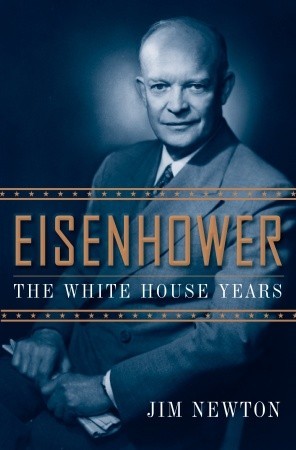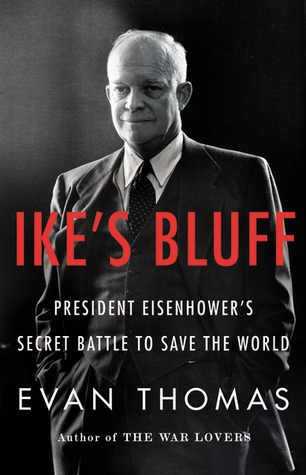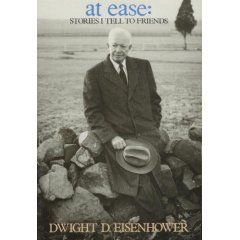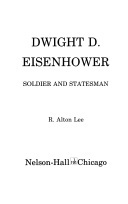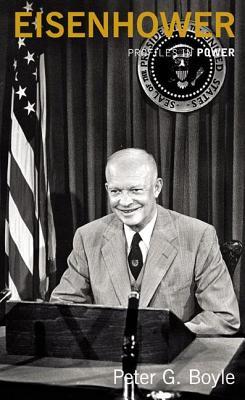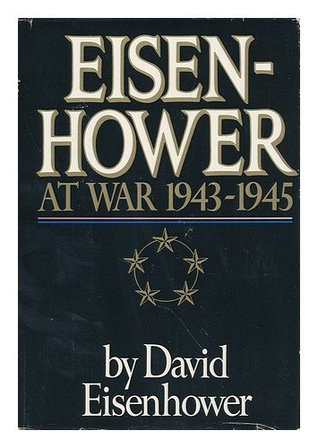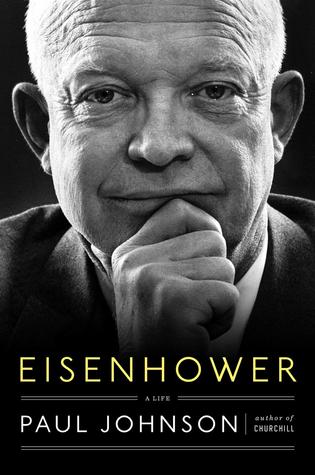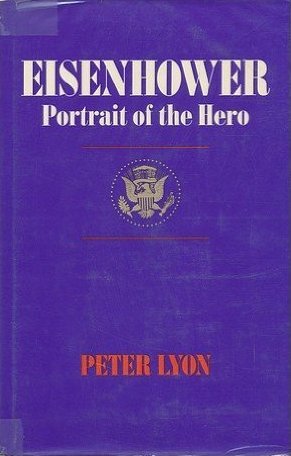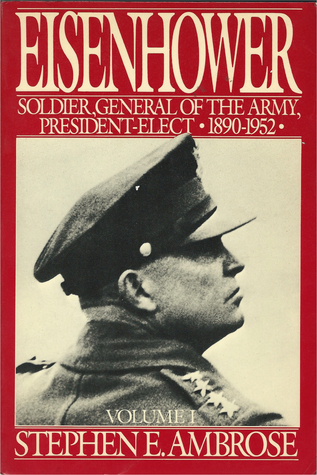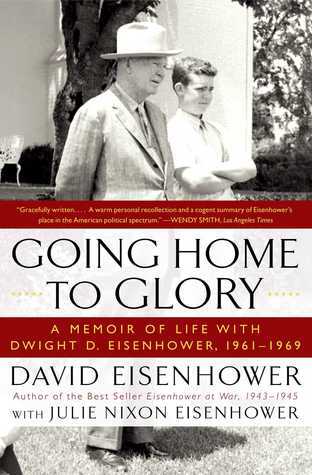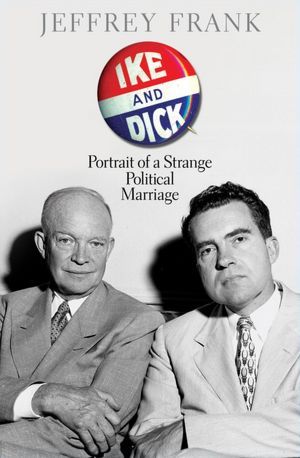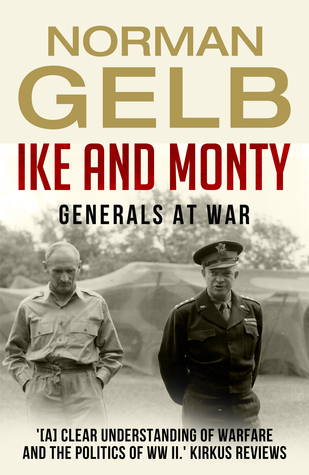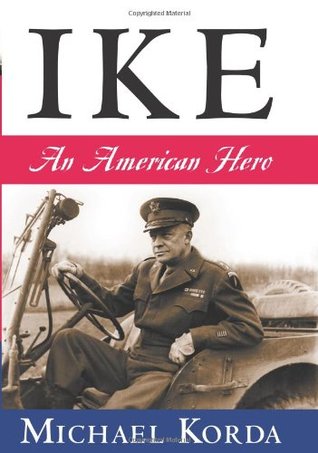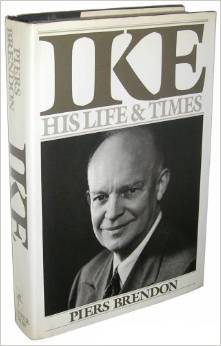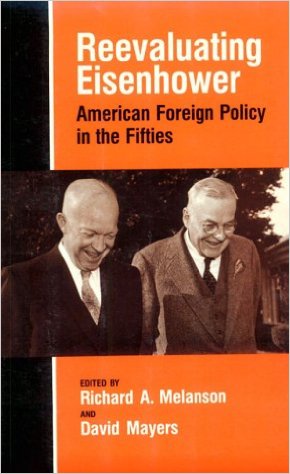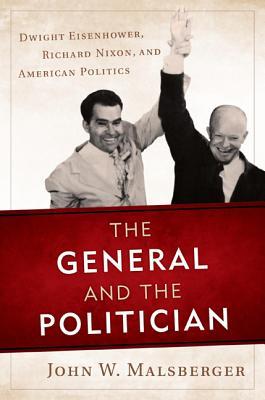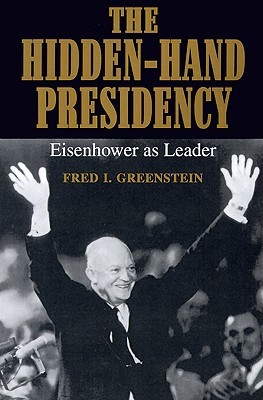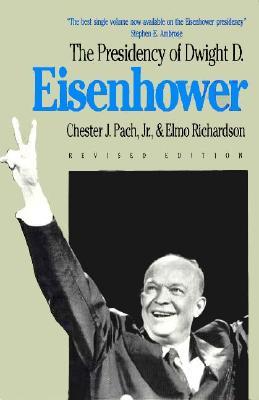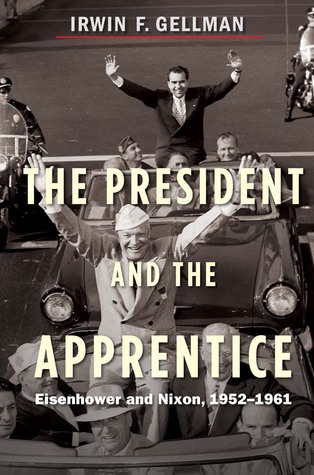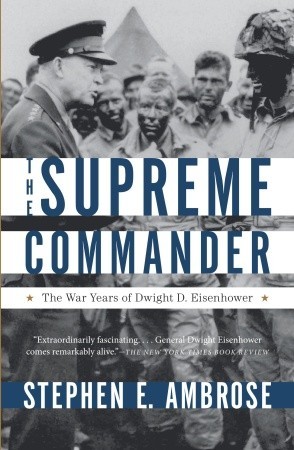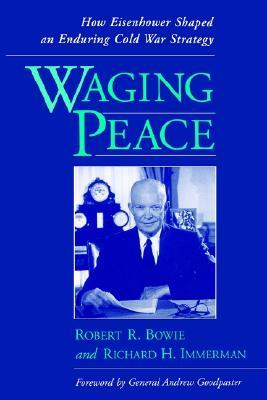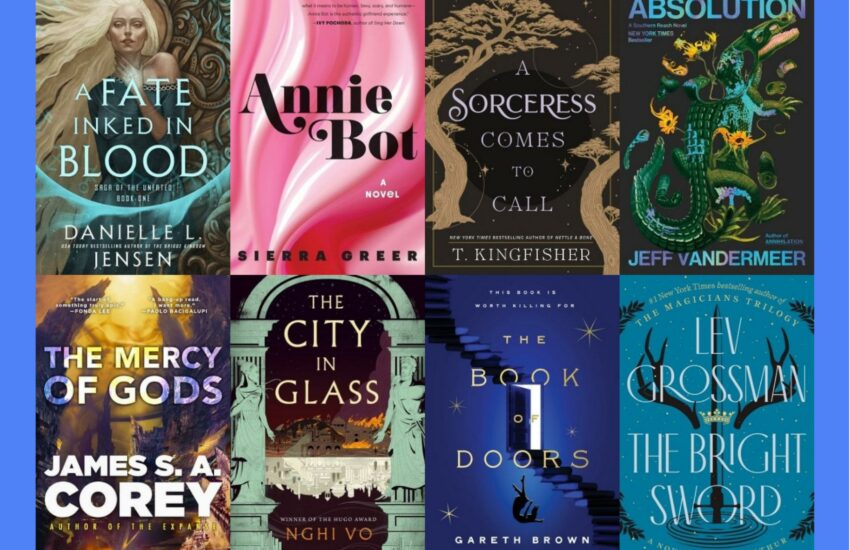The Best Books To Learn About President Dwight D. Eisenhower
(You can view the rest of our presidential Best Book lists by going to our Best US President Books page, or for a more in-depth look at how we found and ranked the books you can visit our Best Book About Every United States President article.)
Dwight D. Eisenhower Quick Facts |
| President Number | 34 |
| Terms In Office | 2 |
| Years | 1953-1961 |
| Political Party | Republican |
| Vice President | Richard Nixon |
| Home State | Kansas |
| Presidential Pet | Weimaraner (Heidi) |
| Campaign Slogan | “I like Ike” & “I still like Ike” Peace and Prosperity” |
| Articles Used in Ranking | 13 |
| Number of Unique Books | 30 |
The Best Book About Dwight D. Eisenhower
(Appears on 6 Lists)
Eisenhower: Soldier and President by Stephen E. Ambrose
- Best Presidential Bios
- Library of Congress
- Mandi Lindner
- Mashable
- Presidents USA
- The Washington Post
Stephen E. Ambrose draws upon extensive sources, an unprecedented degree of scholarship, and numerous interviews with Eisenhower himself to offer the fullest, richest, most objective rendering yet of the soldier who became president.
#2
(Appears on 5 Lists)
Eisenhower in War and Peace by Jean Edward Smith
- At Times Dull
- Best Presidential Bios
- Presidents USA
- The Tailored Man
- The Washington Post
In this extraordinary volume, Jean Edward Smith presents a portrait of Dwight D. Eisenhower that is as full, rich, and revealing as anything ever written about America’s thirty-fourth president. Here is Eisenhower the young dreamer, charting a course from Abilene, Kansas, to West Point and beyond. Drawing on a wealth of untapped primary sources, Smith provides new insight into Ike’s maddening apprenticeship under Douglas MacArthur. Then the whole panorama of World War II unfolds, with Eisenhower’s superlative generalship forging the Allied path to victory. Smith also gives us an intriguing examination of Ike’s finances, details his wartime affair with Kay Summersby, and reveals the inside story of the 1952 Republican convention that catapulted him to the White House.
#3-7
(Appear on 2 Lists)
Dwight D. Eisenhower by Tom Wicker
- All The Presidents Books
- Library of Congress
A bona-fide American hero at the close of World War II, General Dwight Eisenhower rode an enormous wave of popularity into the Oval Office seven years later. Though we may view the Eisenhower years through a hazy lens of 1950s nostalgia, historians consider his presidency one of the least successful. At home there was civil rights unrest, McCarthyism, and a deteriorating economy; internationally, the Cold War was deepening. But despite his tendency toward “brinksmanship,” Ike would later be revered for “keeping the peace.” Still, his actions and policies at the onset of his career, covered by Tom Wicker, would haunt Americans of future generations.
Eisenhower: A Soldier’s Life by Carlo D’Este
- Library of Congress
- Presidents USA
Born into hardscrabble poverty in rural Kansas, the son of stern pacifists, Dwight David Eisenhower graduated from high school more likely to teach history than to make it. Casting new light on this profound evolution, Eisenhower chronicles the unlikely, dramatic rise of the supreme Allied commander.
Eisenhower: The President (Vol 2) by Stephen E. Ambrose
- Best Presidential Bios
- Presidents USA
Eisenhower: The White House Years by Jim Newton
- Best Presidential Bios
- Library of Congress
America’s thirty-fourth president was belittled by his critics as the babysitter-in-chief. This new look reveals how wrong they were. Dwight Eisenhower was bequeathed the atomic bomb and refused to use it. He ground down Joseph McCarthy and McCarthyism until both became, as he said, “McCarthywasm.” He stimulated the economy to lift it from recession, built an interstate highway system, turned an $8 billion deficit in 1953 into a $500 million surplus in 1960.
Ike’s Bluff: President Eisenhower’s Secret Battle to Save the World by Evan Thomas
- Best Presidential Bios
- Presidents USA
Upon assuming the presidency in 1953, Dwight Eisenhower set about to make good on his campaign promise to end the Korean War. Yet while Eisenhower was quickly viewed by many as a doddering lightweight, behind the bland smile and simple speech was a master tactician. To end the hostilities, Eisenhower would take a colossal risk by bluffing that he might use nuclear weapons against the Communist Chinese, while at the same time restraining his generals and advisors who favored the strikes. Ike’s gamble was of such magnitude that there could be but two outcomes: thousands of lives saved, or millions of lives lost.
#8-30
(Appear on 1 List)
At Ease: Stories I Tell to Friends by Dwight D. Eisenhower
- Politico
Dwight D Eisenhower: Soldier and Statesman by R. Lee
- Library of Congress
Eisenhower by Peter G. Boyle
- Library of Congress
Eisenhower is the president who established America as a superpower. He had already launched his reputation as the leading US military figure in the Second World War and then as supreme commander of the land forces of the newly created NATO. This book looks at how Eisenhower held power in the political field, and to what extent his political career was a success
Eisenhower by Geoffrey Perret
- Library of Congress
This new, in-depth life of Eisenhower offers fresh perspectives, not only on World War II and the Korean War but also on the Cold War, the civil rights movement, McCarthyism, the U-2 crisis and Vietnam.
Eisenhower at War, 1943-1945 by David Eisenhower
- Library of Congress
Eisenhower: A Life by Paul Johnson
- Presidential History
Johnson chronicles President Eisenhower’s modest childhood in Kansas, his college years at West Point, and his rapid ascent through the military ranks, culminating in his appointment as Supreme Commander of the Allied Forces in Europe during World War II. Beginning when Eisenhower assumed the presidency from Harry Truman in 1952, Johnson paints a rich portrait of his two consecutive terms, exploring his volatile relationship with then-Vice President Richard Nixon, his abhorrence of isolationism, and his position on the Cold War, McCarthyism, and the Civil Rights Movement. Johnson notes that when Eisenhower left the White House at age 70, reluctantly passing the torch to President-elect John F. Kennedy, he feared for the country’s future and prophetically warned of the looming military-industrial complex.
Eisenhower: Portrait of the Hero by Peter Lyon
- Best Presidential Bios
Eisenhower: Soldier, General of the Army, President-Elect 1890-1952 (Vol 1) by Stephen E. Ambrose
- Best Presidential Bios
In his thrilling first volume of Eisenhower, called by the Christian Science Monitor, “the best biography” of Dwight D. Eisenhower, distinguished historian Stephen E. Ambrose gives an intimate, yet balanced, account of the professional solider whom everybody loved. From Eisenhower’s small town beginnings, to his turbulent years as General Douglas MacArthur’s Chief Staff Officer, his heroic performance as Supreme Commander of the Allied Expeditionary Forces, and his campaign for and election to the presidency, Eisenhower is a captivating book that you won’t want to put down.
Eisenhower’s Heart Attack: How Ike Beat Heart Disease and Held on to the Presidency by Clarence G. Lasby
- Presidents USA
When delegates to the 1956 Republican Convention sang “Ike for four more years,” they were celebrating the President’s health as much as his political agenda. Dwight Eisenhower had suffered a heart attack less than a year before, and his decision to seek a second term symbolized for many Americans Ike’s victory over a nearly fatal illness. This, it seems, was the intended effect.
Going Home to Glory: A Memoir of Life with Dwight D Eisenhower, 1961-1969 by David Eisenhower
- Library of Congress
When President Dwight Eisenhower left Washington, D.C., at the end of his second term, he retired to a farm in historic Gettysburg, Pennsylvania, that he had bought a decade earlier. Living on the farm with the former president and his wife, Mamie, were his son, daughter-in-law, and four grandchildren, the oldest of whom, David, was just entering his teens. In this engaging and fascinating memoir, David Eisenhower—whose previous book about his grandfather, Eisenhower at War, 1943–1945, was a finalist for the Pulitzer Prize—provides a uniquely intimate account of the final years of the former president and general, one of the giants of the twentieth century.
Ike & Dick: Portrait of a Strange Political Marriage by Jeffrey Frank
- Best Presidential Bios
Dwight D. Eisenhower and Richard Nixon had a political and private relationship that lasted nearly twenty years, a tie that survived hurtful slights, tense misunderstandings, and the distance between them in age and temperament. Yet the two men brought out the best and worst in each other, and their association had important consequences for their respective presidencies.
Ike and Monty: Generals at War by Norman Gelb
- Presidents USA
Focuses on the pivotal and often volatile military relationship between two great generals of World War II, Dwight Eisenhower, the Supreme Allied Commander, and Bernard Law Montgomery, the prominent British leader.
Ike: An American Hero by Michael Korda
- Library of Congress
Ike is acclaimed author Michael Korda’s sweeping and enthralling biography of Dwight David Eisenhower, arguably America’s greatest general and one of her best presidents—a remarkable man in an extraordinary time, the hero who won the war and thereafter kept the peace.
Ike: His Life and Times by Piers Brendon
- Library of Congress
Reevaluating Eisenhower: American Foreign Policy in the 1950s by Richard A Melanson
- Presidents USA
The Eisenhower Presidency: Eleven Intimate Perspectives of Dwight D Eisenhower by Kenneth W. Thompson
Lists It Appears On:
- Library of Congress
The General and the Politician: Dwight Eisenhower, Richard Nixon, and American Politics by John W. Malsberger
- Presidents USA
As historian and author John W. Malsberger writes in The General and the Politician: Dwight Eisenhower, Richard Nixon and American Politics, no two political figures could have taken more different routes to the Presidency than did America’s 34th and 37th Commanders in Chief. Thrown together largely for political convenience by a Republican party struggling to reinvent itself through years of post-Depression, Democratic dominance, Dwight Eisenhower and Richard Nixon came to embody two radically different styles of leadership, simultaneously defining – for the American electorate – where American politics had been, and where they were headed. While debate has raged amongst historians over the level of hostility the two men were rumored to harbor for one another, there is – as Malsberger points out – a more accurate reading of their relationship available to us if we examine all the facts. Taken in a broader context, their relationship was much less a momentary collision of dissident styles and values than a genuine watershed moment in American politics, from which our current political spectrum and electorate can trace their roots. The General and the Politician thoroughly and accessibly details the intersection of two of 20th-Century America’s most powerful figures, and examines their tenuous but transformative relationship to reveal the origins of political discussions and debates that we’re still having today.
The Hidden-Hand Presidency: Eisenhower as Leader by Fred I. Greenstein
- Library of Congress
Drawing on extensive interviews and archival research, Fred Greenstein reveals that there was great political activity beneath the placid surface of the Eisenhower White House. In a new foreword to this edition, he discusses developments in the study of the Eisenhower presidency in the dozen years since publication of the first edition and examines the continuing significance of Eisenhower’s legacy for the larger understanding of presidential leadership in modern America.
The Presidency of Dwight D Eisenhower by Chester J. Pach
- Library of Congress
The focus of this revision is not how Eisenhower made policy, but how his decisions shaped American life in the 1950s and beyond. In this first post-revisionist study of the Eisenhower presidency, historian Chester Pach reaches beyond the issues the revisionists raised: Was Eisenhower in command of his own administration? Did he play a significant role in shaping foreign and domistic policy?
The President and the Apprentice: Eisenhower and Nixon, 1952-1961 by Irwin F. Gellman
- Presidential History
More than half a century after Eisenhower left office, the history of his presidency is so clouded by myth, partisanship, and outright fraud that most people have little understanding of how Ike’s administration worked or what it accomplished. We know—or think we know—that Eisenhower distrusted his vice president, Richard Nixon, and kept him at arm’s length; that he did little to advance civil rights; that he sat by as Joseph McCarthy’s reckless anticommunist campaign threatened to wreck his administration; and that he planned the disastrous 1961 Bay of Pigs invasion of Cuba. None of this is true.
The Supreme Commander: The War Years of General Dwight D Eisenhower by Stephen E. Ambrose
- Library of Congress
Ambrose brings Eisenhower’s experience of the Second World War to life, showing in vivid detail how the general’s skill as a diplomat and a military strategist contributed to Allied successes in North Africa and in Europe, and established him as one of the greatest military leaders in the world. Ambrose, then the Associate Editor of the General’s official papers, analyzes Eisenhower’s difficult military decisions and his often complicated relationships with powerful personalities like Churchill, de Gaulle, Roosevelt, and Patton. This is the definitive account of Eisenhower’s evolution as a military leader—from its dramatic beginnings through his time at the top post of Allied command.
The Victors: Eisenhower and His Boys: The Men of World War II by Stephen E. Ambrose
- Presidents USA
If there is a better book about the experience of GIs who fought in Europe during World War II, I have not read it. Citizen Soldierscaptures the fear and exhilaration of combat, the hunger and cold and filth of the foxholes, the small intense world of the individual rifleman as well as the big picture of the European theater in a manner that grips the reader and will not let him go. No one who has not been there can understand what combat is like but Stephen Ambrose brings us closer to an understanding than any other historian has done.
Waging Peace: How Eisenhower Shaped an Enduring Cold War Strategy by Robert R. Bowie
- Presidents USA
Waging Peace offers the first fully comprehensive study of Eisenhower’s “New Look” program of national security, which provided the groundwork for the next three decades of America’s Cold War strategy. Though the Cold War itself and the idea of containment originated under Truman, it was left to Eisenhower to develop the first coherent and sustainable strategy for addressing the issues unique to the nuclear age. To this end, he designated a decision-making system centered around the National Security Council to take full advantage of the expertise and data from various departments and agencies and of the judgment of his principal advisors. The result was the formation of a “long haul” strategy of preventing war and Soviet expansion and of mitigating Soviet hostility. Only now, in the aftermath of the Cold War, can Eisenhower’s achievement be fully appreciated.
The Best Dwight D. Eisenhower Book Lists Consulted
| Source | Article |
| All The Presidents Books | One Through Forty-Two or Forty-Three |
| At Times Dull | Janet’s Presidential Biography Project & Blog |
| Best Presidential Bios | The Best Presidential Biographies |
| Huffington Post | Presidents’ Day History: The Must-Reads Of Presidential Biographies |
| Library of Congress | Selected Bibliography |
| Mandi Lindner | 44 Presidents and Their Definitive Biographies |
| Mashable | Why I’m spending a year reading about every U.S. president |
| Politico | The Presidential Books Worth Reading |
| Presidential History | Presidential Resources |
| Presidential History (Again) | Pulitzer Prize Winning Books About Presidents |
| Presidents USA | FURTHER INFORMATION ABOUT DWIGHT D. EISENHOWER |
| The Tailored Man | The 44 Best Presidential Biographies |
| The Washington Post | The Fix’s list of best presidential biographies |
